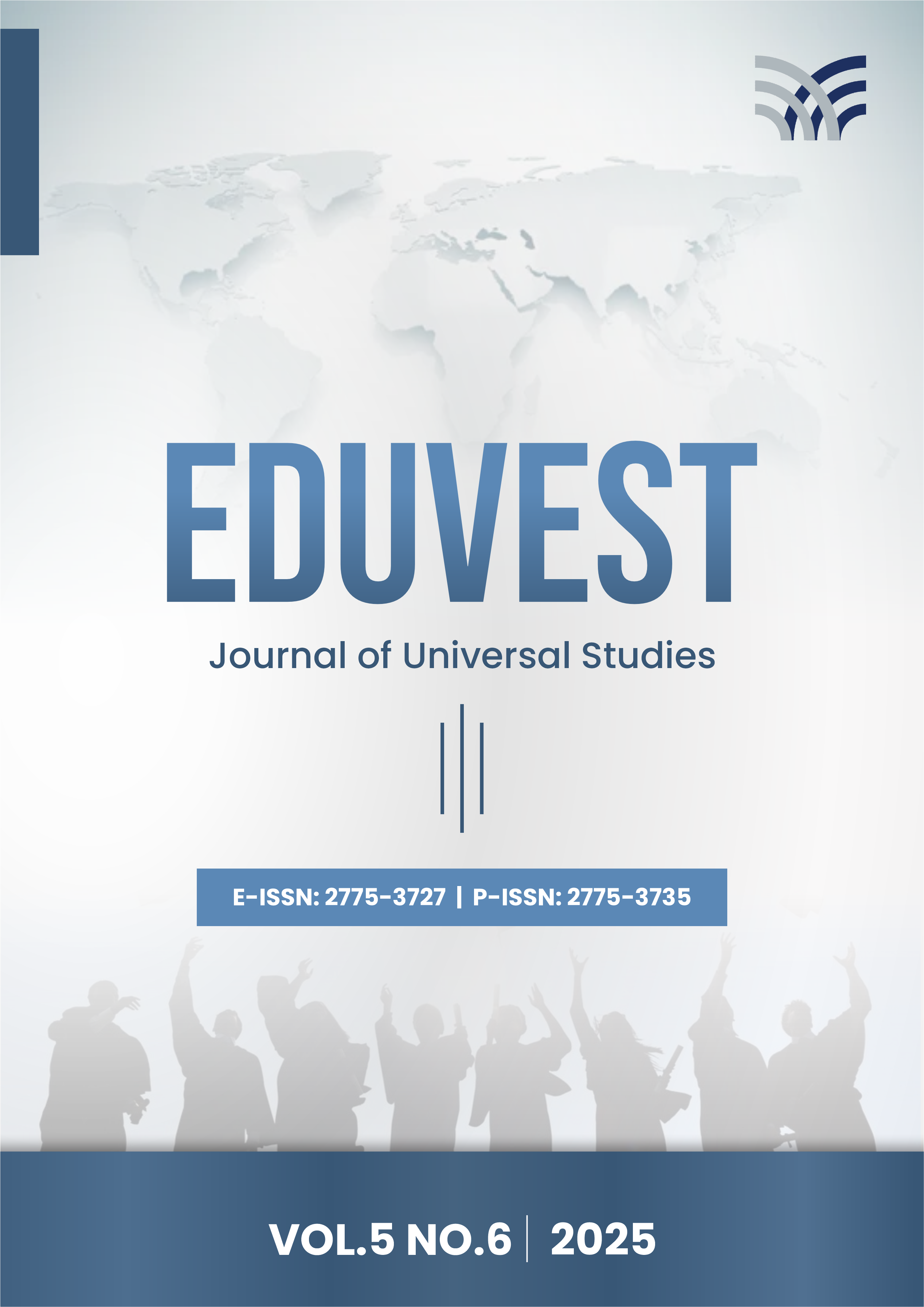Short-Term Traffic Flow Prediction with Support Vector Machine to Reduce Congestion on Toll Roads in Jakarta
DOI:
https://doi.org/10.59188/eduvest.v5i6.51026Keywords:
ARMA, congestion, Traffic prediction, SARMA, Support Vector Regression, traffic managementAbstract
Traffic congestion on Jakarta’s toll roads, exacerbated by rapid urbanization and increasing vehicle numbers, poses significant economic, environmental, and societal challenges. This study addresses the problem of accurately predicting short-term traffic flow to mitigate congestion. The research aims to develop a predictive model using Support Vector Machine (SVM) and compare its performance with traditional time-series models (ARIMA and SARIMA) in capturing traffic patterns influenced by variables such as vehicle volume, speed, weather, and time. A quantitative approach was employed, utilizing hourly traffic data from Jasa Marga and weather data from BMKG for September 2024. The SVM model, configured with an RBF kernel, was evaluated against ARIMA and SARIMA using error metrics (MAE, MPE, RMSE). Findings revealed that SVM outperformed the other models, achieving the lowest MAE (318.10) and MPE (-1.13%), indicating superior accuracy in handling non-linear traffic dynamics. Key influencing factors included peak-hour traffic and adverse weather conditions. The study’s implications are both practical and theoretical. Practically, the SVM model provides toll operators and policymakers with reliable predictions for proactive traffic management, such as dynamic toll pricing and route optimization. Theoretically, it advances the application of machine learning in transportation research, demonstrating SVM’s efficacy over traditional methods. Future research could explore hybrid models (e.g., SVM-LSTM) and real-time data integration for enhanced predictive capabilities. This work contributes to smarter urban mobility solutions in high-density cities like Jakarta.
Downloads
Published
How to Cite
Issue
Section
License
Copyright (c) 2025 Ginanjar Bekti Rakhmanto

This work is licensed under a Creative Commons Attribution-ShareAlike 4.0 International License.











